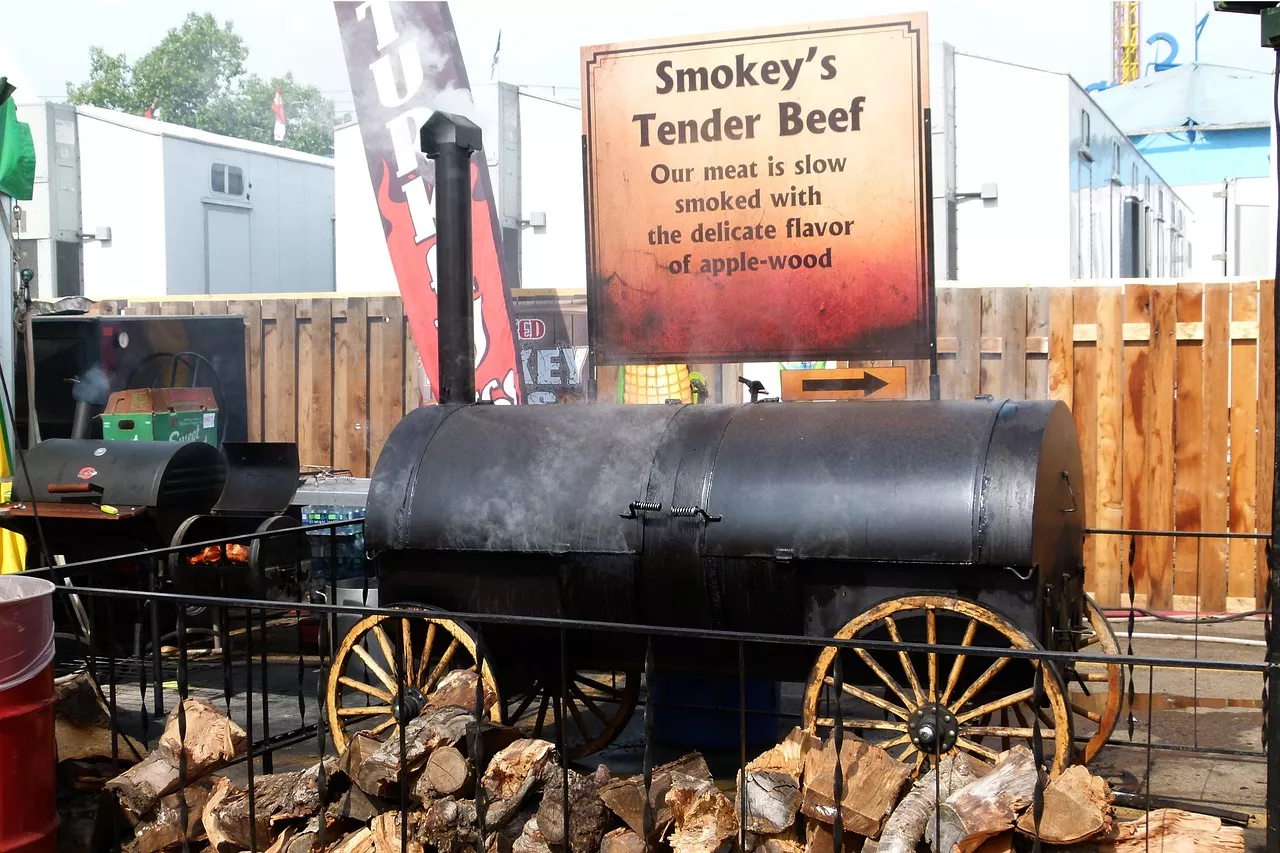The science behind smoking meat
Smoking meat is more than just cooking; it's a science. Understanding the basics of smoking will help you achieve the best results. When you smoke meat, you're not just adding flavor, but also using the smoke to cook the meat slowly and evenly. This low and slow cooking method breaks down the collagen in the meat, resulting in tender, juicy, and flavorful dishes.
To smoke meat, you'll need a smoker, which comes in various types such as charcoal, electric, or gas smokers. Each type has its pros and cons, so it's important to choose one that suits your needs and preferences. Additionally, you'll need some essential equipment like a thermometer, wood chips, and a drip pan to ensure a successful smoking session.
Choosing the right wood for smoking
The type of wood you use for smoking plays a crucial role in the flavor profile of your meat. Different woods impart different flavors, so it's important to choose wisely. Hardwoods like oak, hickory, and mesquite are popular choices for smoking meat as they provide a strong and distinct smoky flavor. Fruitwoods like apple and cherry offer a milder and sweeter taste, while maple and pecan wood add a nutty undertone to the meat.
Experimenting with different wood combinations can lead to exciting flavor profiles, but it's important to avoid softwoods like pine or cedar, as they can release harmful toxins when burned. Soaking the wood chips or chunks in water before use can help them smolder and produce more smoke. Remember, the right wood can make all the difference in achieving that perfect smoky flavor.
Preparing the meat for smoking
Before you start smoking, proper preparation of the meat is crucial. For most cuts, you'll want to remove excess fat and trim any silver skin to ensure even cooking. However, leaving a thin layer of fat can add flavor and moisture to the meat. For larger cuts like briskets or pork shoulders, you might want to consider applying a dry rub or marinade to enhance the flavor.
A dry rub is a mixture of spices, herbs, and sometimes sugar that is applied to the meat to add flavor and create a crust during smoking. Creating your own rub allows you to customize the flavors based on your preferences. Alternatively, you can use a pre-made rub, which can be found in most grocery stores. When applying the rub, make sure to massage it into the meat, covering all sides evenly.
The art of seasoning and marinades
Seasoning the meat is an essential step in the smoking process. Besides the dry rub, you can also use marinades to infuse the meat with additional flavors. Marinades typically consist of a mixture of oil, acid (such as vinegar or citrus juice), and seasonings. The acid helps tenderize the meat while the oil and seasonings add flavor.
When marinating, it's important to allow enough time for the flavors to penetrate the meat. This can range from a few hours to overnight, depending on the type and thickness of the meat. Remember to refrigerate the meat while marinating to prevent the growth of harmful bacteria.
Temperature and cooking times for different types of meat
Maintaining the right temperature is crucial for successful smoking. Different cuts of meat require different cooking temperatures and times to achieve optimal results. Generally, low and slow is the way to go, with temperatures ranging from 225°F to 275°F (107°C to 135°C). This allows the collagen in the meat to break down slowly, resulting in tender meat.
For pork ribs, you'll want to cook them for approximately 4 to 6 hours until the meat is tender and pulls away from the bone. Briskets, on the other hand, can take anywhere from 10 to 16 hours, depending on the size and thickness. It's important to use a meat thermometer to ensure that the internal temperature reaches the desired level for safe consumption.
Monitoring and maintaining the smoker
While the meat is smoking, it's crucial to monitor and maintain the smoker to ensure consistent heat and smoke production. Keep an eye on the temperature, making adjustments as necessary to maintain the desired range.
Adding wood chips or chunks periodically throughout the smoking process is important to maintain a steady flow of smoke. Soak the wood in water beforehand to prevent it from burning too quickly. Some smokers have a separate wood chip tray, while others require you to place the wood directly on the heat source. Experiment with different wood combinations to find your preferred flavor profile.
Resting and serving the smoked meat
Once the meat has reached the desired internal temperature, it's crucial to let it rest before serving. Resting allows the juices to redistribute, resulting in a more flavorful and tender end product. Wrap the meat in foil or butcher paper and let it rest for at least 30 minutes, or longer for larger cuts.
When it's time to serve, slice the meat against the grain for maximum tenderness. Serve it as is or with your favorite barbecue sauce or glaze. Smoked meat pairs well with a variety of sides, such as coleslaw, cornbread, or baked beans. Get creative and enjoy the fruits of your smoking labor!
Troubleshooting common smoking issues
Even the most experienced pitmasters encounter challenges when smoking meat. Some common issues include uneven cooking, dry meat, or excessive smoke. Understanding the possible causes and solutions can help you troubleshoot and overcome these hurdles.
Uneven cooking can be caused by a few factors, such as uneven heat distribution or improper placement of the meat. To combat this, rotate the meat periodically during the smoking process and consider using a water pan to help regulate the temperature.
Dry meat can occur when the cooking temperature is too high or the meat is overcooked. To prevent this, monitor the temperature closely and remove the meat from the smoker once it reaches the desired internal temperature. Wrapping the meat in foil during the smoking process can also help retain moisture.
Excessive smoke can result in bitter flavors on the meat. This can be caused by using too much wood or not providing enough airflow. Adjust the amount of wood you're using and ensure that there is proper ventilation in the smoker to allow the smoke to escape.
Conclusion
Smoking meat is a rewarding and delicious experience that can elevate your culinary skills to new heights. With the step-by-step guide provided in this article, you now have the knowledge and confidence to embark on your smoking journey. Remember to choose the right type of smoker and wood, prepare the meat with care, and monitor the temperature and smoke production throughout the cooking process. With practice and experimentation, you'll be able to unlock the secrets to perfectly smoked meat and impress your friends and family with mouthwatering dishes. So, fire up your smoker, grab your favorite cut of meat, and let the smoking adventure begin!

 Perfectly Crispy Schnitzel A Step-by-Step Tutorial
Perfectly Crispy Schnitzel A Step-by-Step Tutorial Discover the Secrets to Perfectly Popped Popcorn at Home
Discover the Secrets to Perfectly Popped Popcorn at Home



